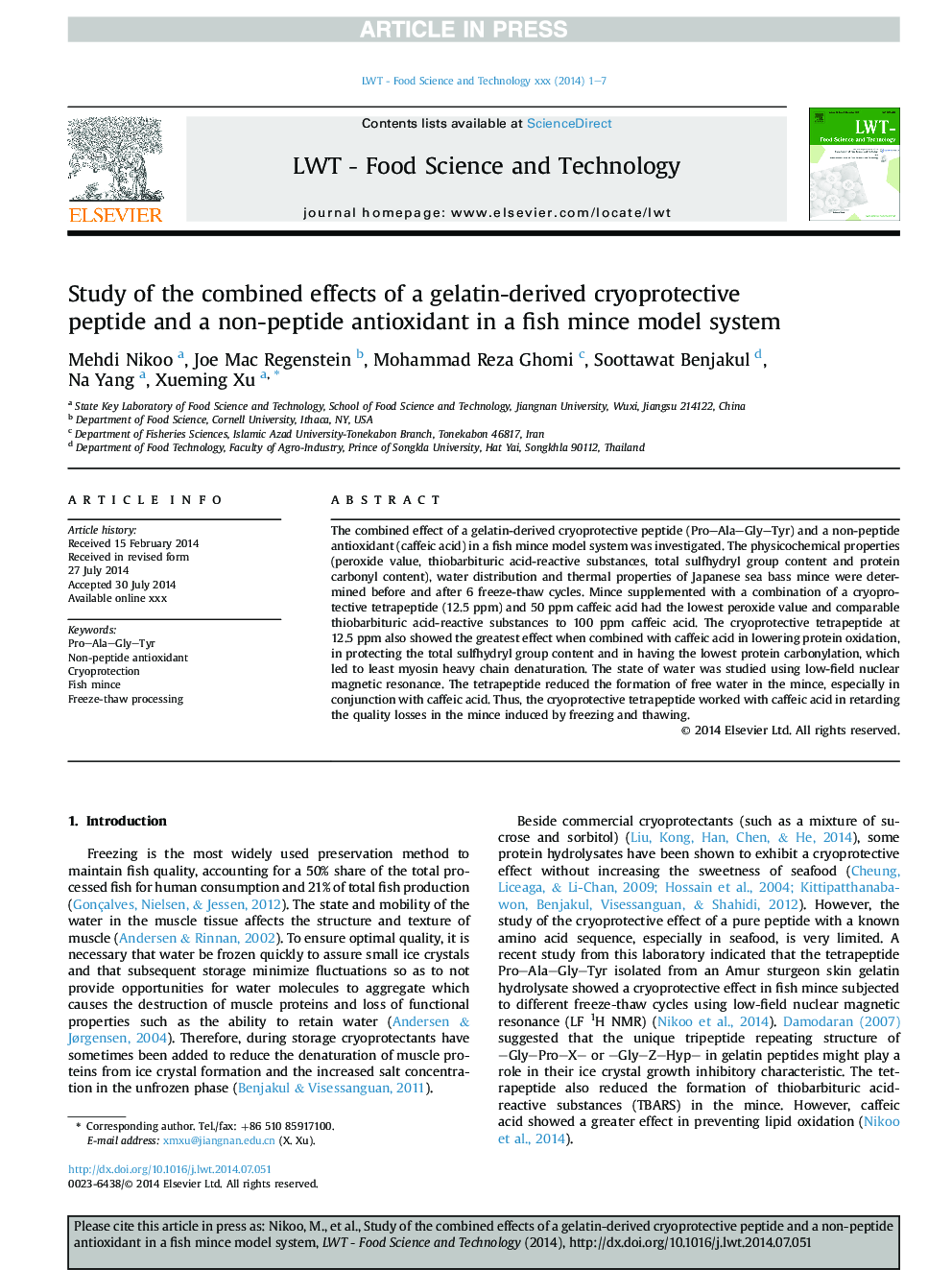| Article ID | Journal | Published Year | Pages | File Type |
|---|---|---|---|---|
| 6402915 | LWT - Food Science and Technology | 2015 | 7 Pages |
Abstract
The combined effect of a gelatin-derived cryoprotective peptide (Pro-Ala-Gly-Tyr) and a non-peptide antioxidant (caffeic acid) in a fish mince model system was investigated. The physicochemical properties (peroxide value, thiobarbituric acid-reactive substances, total sulfhydryl group content and protein carbonyl content), water distribution and thermal properties of Japanese sea bass mince were determined before and after 6 freeze-thaw cycles. Mince supplemented with a combination of a cryoprotective tetrapeptide (12.5Â ppm) and 50Â ppm caffeic acid had the lowest peroxide value and comparable thiobarbituric acid-reactive substances to 100Â ppm caffeic acid. The cryoprotective tetrapeptide at 12.5Â ppm also showed the greatest effect when combined with caffeic acid in lowering protein oxidation, in protecting the total sulfhydryl group content and in having the lowest protein carbonylation, which led to least myosin heavy chain denaturation. The state of water was studied using low-field nuclear magnetic resonance. The tetrapeptide reduced the formation of free water in the mince, especially in conjunction with caffeic acid. Thus, the cryoprotective tetrapeptide worked with caffeic acid in retarding the quality losses in the mince induced by freezing and thawing.
Keywords
Related Topics
Life Sciences
Agricultural and Biological Sciences
Food Science
Authors
Mehdi Nikoo, Joe Mac Regenstein, Mohammad Reza Ghomi, Soottawat Benjakul, Na Yang, Xueming Xu,
